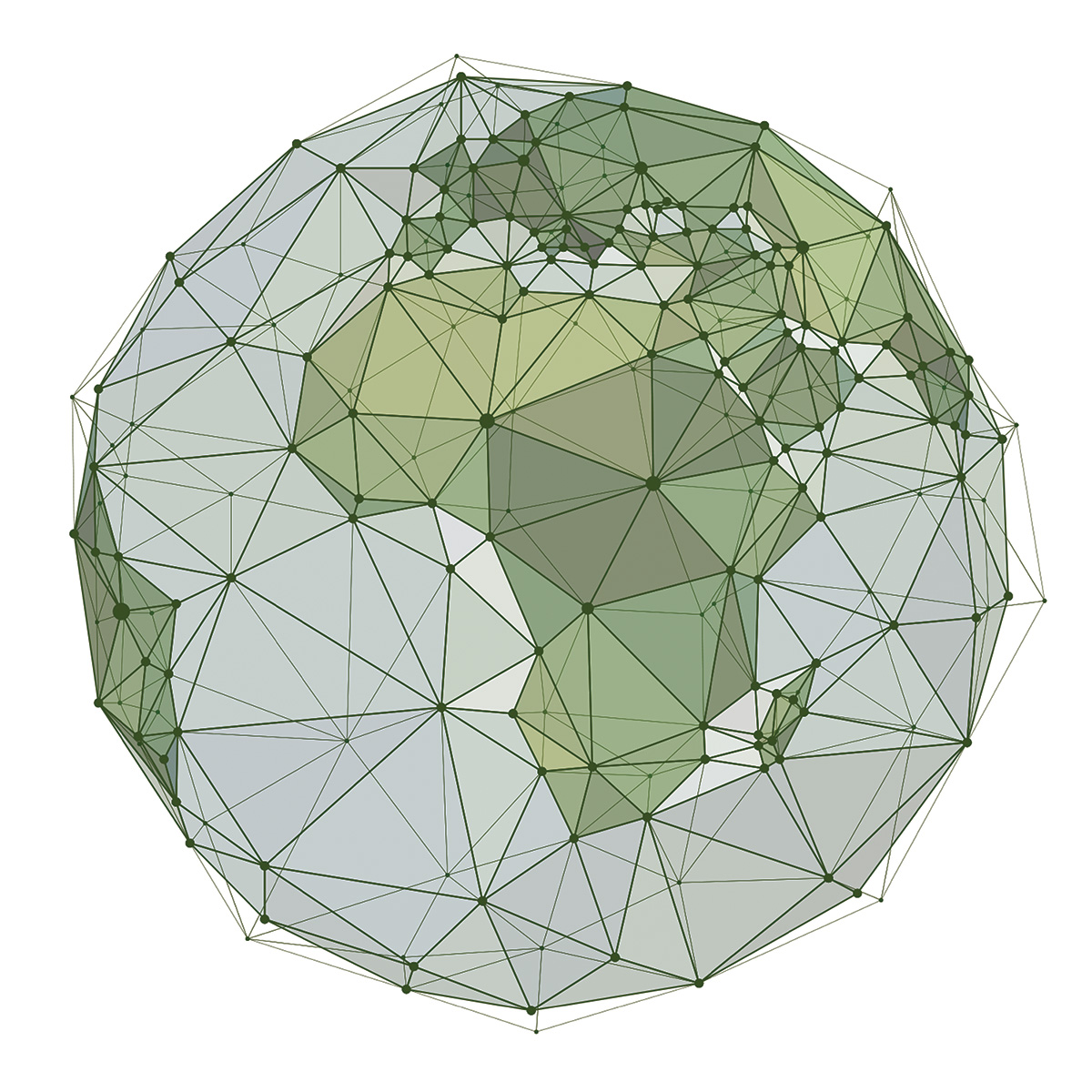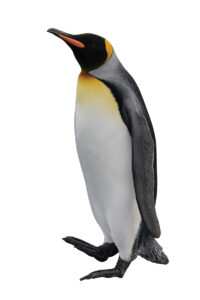In 1980, the year that PERC was founded, I spent three months in the Himalayas working on a wildlife conservation project. The purpose was to do wildlife surveys on behalf of the Indian government in the stunningly beautiful valleys of the Kulu region in northern India, among forests of deodar cedar and evergreen oak. One species of particular interest was a bird called the western tragopan, a large, spotted gray forest pheasant with red plumage around the neck and bright blue skin on the male’s throat. The bird was found only in a few places and thought to be teetering on the brink of extinction.
Though we saw other pheasant species, we never saw a tragopan that year, but some of the people we met knew of the bird, and one even handed me the remains of a tragopan that had been shot for food. I feared it might be the last one. I wanted to come back in the spring when the birds’ mating calls might give them away in the deep bamboo thickets they preferred, but work prevented me.
If you had asked me in 1980 to predict what would happen to that bird and its forest ecosystem, I would have been very pessimistic. I could see the effect on the forests of growing human populations, with their guns and flocks of sheep. More generally, I was marinated in gloom by almost everything I read about the environment. The human population explosion was unstoppable; billions were going to die of famine; malaria and other diseases were going to increase; oil, gas, and metals would soon run out, forcing us to return to burning wood; most forests would then be felled; deserts were expanding; half of all species were heading for extinction; the great whales would soon be gone from the oil-stained oceans; sprawling cities and modern farms were going to swallow up the last wild places; and pollution of the air, rivers, sea, and earth was beginning to threaten a planetary ecological breakdown. I don’t remember reading anything remotely optimistic about the future of the planet.
Today, the valleys we worked in are part of the Great Himalayan National Park, a protected area that gained prestigious World Heritage status in 2014. The logo of the park is an image of the western tragopan, a bird you can now go on a trekking holiday specifically to watch. It has not gone extinct, and although it is still rare and hard to spot, the latest population estimate is considerably higher than anybody expected back then. The area remains mostly a wilderness accessible largely on foot, and the forests and alpine meadows have partly recovered from too much grazing, hunting, and logging. Ecotourism is flourishing.
This is just one small example of things going right in the environment. Let me give some bigger ones. Far from starving, the seven billion people who now inhabit the planet are far better fed than the four billion of 1980. Famine has pretty much gone extinct in recent decades. In the 1960s, about two million people died of famine; in the decade that just ended, tens of thousands died—and those were in countries run by callous tyrants. Paul Ehrlich, the ecologist and best-selling author who declared in 1968 that “[t]he battle to feed all of humanity is over” and forecast that “hundreds of millions of people will starve to death”—and was given a genius award for it—proved to be very badly wrong.
Remarkably, this feeding of seven billion people has happened without taking much new land under the plow and the cow. Instead, in many places farmland has reverted to wilderness. In 2009, Jesse Ausubel of Rockefeller University calculated that thanks to more farmers getting access to better fertilizers, pesticides, and biotechnology, the area of land needed to produce a given quantity of food—averaged for all crops—was 65 percent less than in 1961. As a result, an area the size of India will be freed up by mid-century. That is an enormous boost for wildlife. National parks and other protected areas have expanded steadily as well.
Nor have these agricultural improvements on the whole brought new problems of pollution in their wake. Quite the reverse. The replacement of pesticides like DDT with much less harmful ones that do not persist in the environment and accumulate up the food chain, in addition to advances in biotechnology, has allowed wildlife to begin to recover. In the part of northern England where I live, otters have returned to the rivers, and hawks, kites, ospreys, and falcons to the skies, largely thanks to the elimination of organochlorine pesticides. Where genetically modified crops are grown—not in the European Union—there has been a 37 percent reduction in the use of insecticides, as shown by a recent study done at Gottingen University.
If you had asked me in 1980 to predict what would happen, I would have been very pessimistic. I don’t remember reading anything remotely optimistic about the future of the planet.
One of the extraordinary features of the past 40 years has been the reappearance of wildlife that was once seemingly headed for extinction. Bald eagles have bounced back so spectacularly that they have been taken off the endangered list. Deer and beavers have spread into the suburbs of cities, followed by coyotes, bears, and even wolves. The wolf has now recolonized much of Germany, France, and even parts of the heavily populated Netherlands. Estuaries have been cleaned up so that fish and birds have recolonized rivers like the Thames.
Global Greening
Here’s a question I put to school children when I get the chance: Why is the wolf population increasing, the lion decreasing, and the tiger now holding its own? The answer is simple: Wolves live in rich countries, lions in poor countries, and tigers in middle-income countries. It turns out that we conservationists were wrong to fear economic development in the 1980s. Prosperity is the best thing that can happen to a country’s wildlife. As people get richer, they can afford to buy electricity rather than cut wood, buy chicken rather than hunt bushmeat, or get a job in a town rather than try to scratch a living from a patch of land. They can also stop worrying that their children will starve and start to care about the environment. In country after country, first in Asia, then in Latin America, and now increasingly in Africa, that process of development leading to environmental gains has swiftly delivered a turning point in the fortunes of wild ecosystems.
One way of measuring such progress is to look at forests. Forests are still being cut down in poor countries, but they are expanding in rich ones. It turns out that when a country reaches a certain level of income, around $5,000 per person per year, it starts reforesting. This is because people become wealthy enough to stop relying on wood fires for cooking and to use electricity or gas instead. Bangladesh, for example, was desperately poor in 1980 but is now rich enough to be significantly increasing its forest cover today.
Overall, therefore, the number of trees in the world is steadily increasing. A study published by NASA and the University of Maryland in 2018 examined satellite data and found that global increases in tree cover have more than offset losses in tree cover over the past 35 years. This is not just because of growing plantations of timber crops; most of it is natural regeneration. Nor is this happening only in the cold woods of the North; tropical countries are reforesting as well. If you had told me in 1980 that this would happen, I would not have believed you.
In 2013, I caught wind of an interesting study being done by NASA in conjunction with Boston and Beijing Universities. A team of researchers had found a way of measuring the quantity of green vegetation on the surface of the planet using satellite data. It was increasing: There were more green leaves each year. I published an article on this phenomenon of “global greening” and was immediately vilified for my impertinence in departing from the pessimistic script. But in fact it had been clear for some years that the carbon dioxide levels measured on top of a mountain in Hawaii, though increasing year over year, were also rising and falling with the seasons more than they once did, implying there was more growth of green leaves in the northern hemisphere summers.
In 2016, the same team published a paper confirming that global greening was occurring and speculating about the cause. Although the press release that accompanied the paper preemptively admonished me—by name!—for taking any comfort from this fact, it quoted the lead author, Zaichin Zhu of Beijing University, saying that the greening over the past 30 years was equivalent to adding a new continent covered in green vegetation twice the size of the United States. Global greening is occurring in all ecosystems, including rainforests, tundras, and croplands, and it is particularly strong in the arid areas of the planet.
By analyzing the patterns of this greening, Zhu and his colleagues were able to tease out why it was happening. Some of it was due to the use of fertilizer, some to increased rainfall caused by the slight warming of the seas, and some to reforestation. But the greatest cause, responsible for 70 percent of the greening, was the increase in carbon dioxide in the atmosphere as a result of burning fossil fuels. Carbon dioxide is the raw food that plants use, with water, to make carbohydrates and thence proteins and fats.
This CO2-fertilization effect was well known in principle, thanks to thousands of experiments in laboratories, greenhouses, and the open air over many years. Indeed, commercial greenhouses purchase carbon dioxide to pump over tomato plants to encourage them to grow faster. But this was the first time it had been measured on a global scale. Another study published this year confirmed “the rising atmospheric CO2 concentration as the dominant driver” of a 31 percent increase in global terrestrial gross primary production since 1900.
Global greening means that there is more food every year for caterpillars, antelopes, woodpeckers, and countless other species. It also means we need less land to feed ourselves than we would otherwise have needed by now. Of all the things that I did not expect in 1980, this is surely one of the most remarkable.
More From Less
In the ocean, too, though a lot is still going wrong, my younger self in 1980 would be amazed by what has happened. The amount of oil spilled in the seas has fallen by 80 percent since 1980. This is because shipowners got together and agreed to use double-hulled tankers, and GPS navigation soon made shipwrecks less likely. At the same time, the populations of whales have increased in spectacular fashion. Humpback whales, for example, numbered less than 5,000 in the 1960s. Today there are at least 80,000.
The subantarctic island of South Georgia, which I was fortunate to visit in 2016, now has millions of king penguins, millions of fur seals, and almost a million elephant seals crowding its beaches. These species were vanishingly rare in the middle of the 20th century, after whalers and sealers had devastated the island’s wildlife. In the Arctic, the numbers of walrus and polar bear have similarly rebounded to high levels. This is partly because of regulatory protection, but also partly due a change in economic incentives. Just like an African subsistence farmer who gets a job in a town and starts to buy chicken in the shop instead of relying on bushmeat, so we in the West have decided that killing wild seals and whales for their meat or their blubber now makes less economic sense than rearing chickens, growing canola, or drilling for oil.
What else might we achieve by the year 2060? Even though there will then be more than nine billion people, it is almost certain there will be larger forests, more wildlife, cleaner rivers, and richer seas. Most people who deny this, and insist things are getting worse, are simply wrong.
Indeed, in areas where wildlife populations are declining, it is now often caused by competition from recovering species. Fin whales are gathering in such huge aggregations off Elephant Island near the Antarctic Peninsula that they are eating the krill relied on by chinstrap penguins, causing a fall in the numbers of the latter. Humpback whales are eating the prey of puffins off the coast of Iceland, contributing to breeding failures. Killer whales have driven away great white sharks in South Africa. Hedgehogs have disappeared from much of the British countryside because of predation by badgers, whose populations have blossomed.
If only we could stop relying on wild caught fish, they too could recover to fill the seas again. Fortunately, we are making progress here as well. Today, about half of our seafood now comes from farmed fish and shrimp. But to feed these farmed animals, we still need to catch wild fish, and if we can alter that, perhaps with biotech crops, then maybe we can go back to a time when vast shoals of huge tuna and swordfish roamed the oceans.
Some worry that reporting good news about the environment makes people complacent. I disagree. It makes people realize that declines are not inevitable, that improvements are possible, and that it is worth trying. Take the case of New Zealand’s determination to rid itself of all mammalian predators by 2050. (Apart from bats and seals, no mammals are native to New Zealand, and introduced alien mammals such as stoats and foxes have devastated native wildlife.) This ludicrously ambitious plan is only being contemplated because of the remarkable achievements of New Zealand conservationists on offshore islands, such as Stewart Island and South Georgia, where poisoned rat bait spread by helicopters has rid large, mountainous islands of rodents altogether.
Despite such efforts, the perils presented by alien species are an example of a trend that is not yet going in the right direction, and it is a reminder not to be Panglossian. Invasive species are the biggest cause of extinction of mammals and birds on islands. The brown tree snake, for example, has caused the extinction of 12 bird species on Guam. One innovation that could help in this fight is gene drive, a technology in which a genetic sequence that makes all offspring male spreads through a population for a set number of generations, driving a local population extinct. This could soon be used, for example, to wipe out the alien mosquitoes that have spread the avian malaria that has caused the decline of native honeyeaters in Hawaii, many species of which have gone extinct.
I therefore venture to predict that in 40 years we will have rid the world’s islands of many of the invasive species that have done such harm, using biotechnology. Indeed, we will have gone further and revived several extinct species. Under the banner of Revive and Restore, Ryan Phelan and Stewart Brand have begun exploring how this could be done. First you need to read the full genome of an extinct species from a museum specimen. In some cases this has already been done. The passenger pigeon, which went extinct in 1914, and the great auk, which went extinct in 1844, have been sequenced in this way. Second you need to make precise edits to the genome of a closely related species. The new base-editing and prime-editing techniques that are being developed promise to make this possible fairly soon. Third, you need to introduce this genome into embryos to grow a population of individuals, and then you need to reintroduce them to the wild. I expect this will happen in my children’s lifetime.
The Next 40
What else might we achieve by the year 2060, when I shall be 102? Even though there will then be more than nine billion people, it is almost certain there will be larger forests, more wildlife, cleaner rivers, and richer seas, because that is what is currently happening. Most people who deny this, and insist things are getting worse, are simply wrong. The latest example is the “insect apocalypse,” a scare that has been widely reported by the media but is based on inadequate data and ridiculous exaggerations from one or two small-scale studies of dubious value.
There is, however, one thing that worries me, and it is this: Some environmentalists, as steeped in pessimism today as I was 40 years ago, are determined to push policies that actually harm the environment. They want us to farm organically, even though that uses more land and does more harm to the soil than farming with chemicals and biotechnology. They want us to get all of the energy we need from the sun or the wind, even if it means covering the landscape in industrial structures to try to extract energy from extremely low-density sources. They want us to turn crops into fuel, via ethanol from corn or diesel from palm oil, even though this means pinching land from wildlife. They want us to reject biotechnology and nuclear power, two practices that reduce humans’ environmental footprint. They want us to recycle plastic, rather than incinerate it, which has resulted in an industry of exporting plastic to Asia where much of it ends up dumped in the ocean. In short, their policies are in many cases actually worse for the environment.
I will end with one further prediction. While climate change is real and man-made, it will not cause catastrophe by 2060. The current rate of warming over the past three decades is about half what scientists predicted in 1990: 0.17ºC per decade compared with 0.30ºC. And, as predicted, the warming is happening more at night, in cold areas, and in winter than in the daytime, in warm areas, and in summer. The effect on the frequency and intensity of storms, droughts, floods, blizzards, and other weather events is still so small that it is hard to detect. These continue to happen, of course. There has probably been a slight decline in droughts, but a slight increase in heat waves. There is less snow cover in the northern hemisphere in spring, more in fall, and no change in winter. Glaciers are retreating, as they have been since the mid-1800s. Most important, deaths from weather events continue to fall steeply as more countries get access to the technology, infrastructure, and information needed to prevent large-scale loss of life in a hurricane, drought, or flood.
Moreover, if warming continues like this, by 2060 we will still not have reached the sort of temperatures that were standard in the early part of the current interglacial period, when the Arctic Ocean regularly lost all of its ice during the summer. So we are not heading into unprecedented territory. And I suspect that we will ultimately solve the problem by substituting nuclear fusion for fossil fuels long before its consequences turn catastrophic.
I was wrong to be pessimistic about the environment in 1980, and it would be wrong to give young people a counsel of despair today. Much has improved since then, and as PERC’s work has demonstrated for four decades and counting, much improvement from here is not only possible, but likely.







